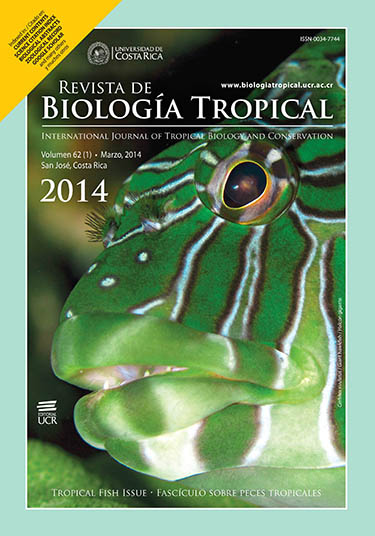Resumen
Los estudios sobre aspectos reproductivos no son muy abundantes en la literatura científica sobre los taxones de Lycopodiaceae y constituyen información esencial para apoyar la taxonomía y relaciones sistemáticas en el grupo. Por lo tanto, se presenta aquí un análisis detallado de la ontogenia de los esporangios y esporogénesis, así como determinaciones químicas de varios compuestos generados durante la formación de las esporas. Los análisis se llevaron a cabo en 14 taxones de seis géneros de la familia: Diphasiastrum, Diphasium, Huperzia (un género que se trata aquí, incluyendo Phlegmariurus), Lycopodiella, Lycopodium y Palhinhaea. Las muestras fueron recolectadas en tres departamentos de los Andes de Colombia entre 1 454-3 677m de altitud. La ontogenia se estudió en trozos de estróbilos y ejes, de 1cm de largo, que se fijaron en glutaraldehido o FAA, se deshidrataron en alcohol, se incluyeron en LR White, se seccionaron en cortes de 0.2-0.5μm y se colorearon con azul de toluidina (TBO), un colorante metacromático que permite detectar tanto esporopolenina como lignina o sus precursores. Para estudios adicionales, secciones de 3-5μm de material incluido en paraplast plus se colorearon con safranina-verde rápido y azul alcián-hematoxilina. Las pruebas químicas se llevaron a cabo en secciones de esporangios sin fijar en diferentes etapas de madurez utilizando azul alcián (mucopolisacáridos), solución de Lugol (almidón), Sudán III (lípidos), fluoroglucinol (lignina) y orceína (cromosomas). Las observaciones se efectuaron con microscopio fotónico equipado con contraste diferencial de interferencia (DIC) y microscopía de fluorescencia (para esporas y pared de los esporangios sin colorear). Para observaciones con microscopía electrónica de barrido (MEB), los estróbilos y esporangios se deshidrataron con 2,2 dimetoxipropano, se desecaron a punto crítico y se metalizaron con oro. Los resultados indican que la ontogenia de los esporangios y esporogénesis es muy similar a la observada previamente en Huperzia brevifolia. En las primeras etapas de desarrollo, las paredes celulares de la epidermis del esporangio se cutinizan y en las finales se lignifican. En el desarrollo del esporodermo, la primera capa que se forma es el exosporio, compuesto por esporopolenina. El endosporio es una capa interna delgada compuesta de celulosa, pectina y polisacáridos carboxilados. El perisporio, si está presente, es la última capa que se deposita. Los mucopolisacáridos se encontraron en la cubierta del esporocito, son abundantes en la cavidad esporangial hasta la etapa de tétradas inmaduras y luego desaparecen. Los lípidos son abundantes en esporocitos, tétradas y esporas, y representan la principal fuente de energía de estas. En contraste, el almidón no se detecta en las esporas pero es abundante en esporocitos premeióticos y tétradas inmaduras, ambos con gran actividad metabólica. La fluorescencia intrínseca corrobora la presencia de lignina y cutina en la pared del esporangio, mientras que la esporopolenina se limita al exosporio. Las células de transfusión y el perisporio no siempre están presentes. Sin embargo, los procesos de la ontogenia y esporogénesis son extremadamente similares en todos los taxones estudiados, lo que sugiere que representan rasgos típicos de familia, no específicos ni genéricos.
1Grupo de Estudios Botánicos y Docentes delInstituto de Biología, Universidad de Antioquia, calle 67 No. 53 -108, Medellín, Colombia; ejrbaron@gmail.com, alzatef@gmail.com
2 Grupo Ecología y Diversidad Vegetal, Departamento de Biología, Calle 13 # 100-00, Universidad del Valle, Sede Meléndez, Cali, Colombia.






